The Akrotiri Peninsula lies only a couple of kilometers southwest of Limassol and is home to the largest inland body of water in Cyprus. Akrotiri Salt Lake is around 10 kilometers big and also belongs to the British Sovereign Base Area of Akrotiri. It is fully open for visitors all year round. The lake is perfect for people who long for a more peaceful escape from nearby bigger cities like Limassol or Paphos.
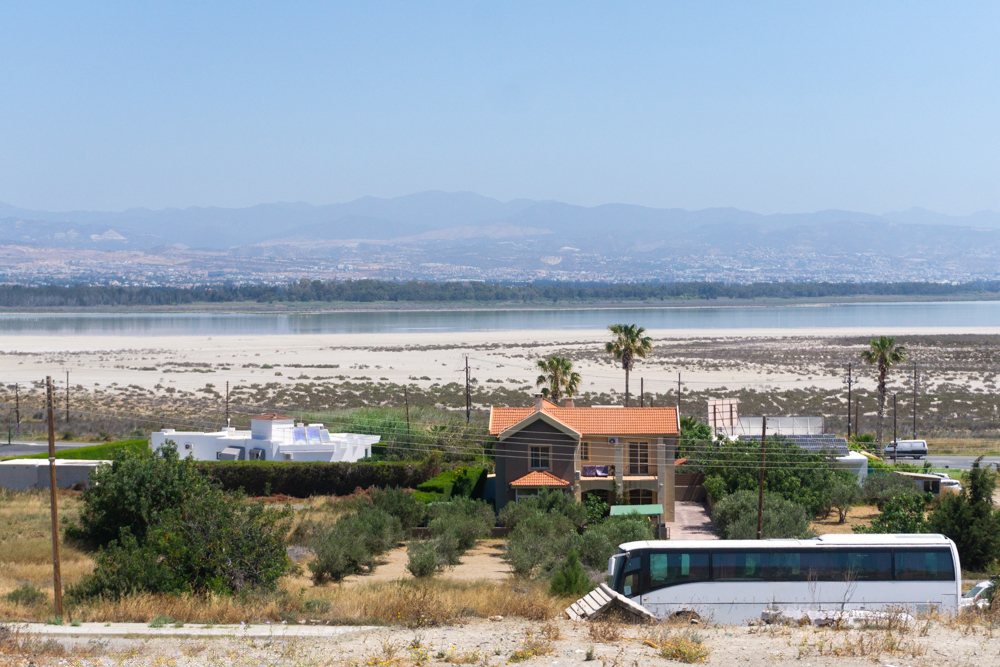
Wildlife & Birdwatching
The most common reason people want to visit Akrotiri Salt Lake is the seasonal flamingos. They usually arrive around November and stay until March. The lake is full of water during the winter months, which slowly dries in spring. For example, during my visit in May 2025, the lake was mostly dry, but many flamingo imprints were everywhere. During the peak season, many pink flocks gather across the shimmering lake.
Besides the pink flamingos, there are an additional 250 bird species. Thanks to them, the area became the richest wetland habitat in Cyprus. Some regular visitors include herons, gulls, ducks, egrets, and raptors. Usually, during the spring and autumn, the area becomes a stopover for migratory birds who move between Europe, Africa, and Asia. Some of the rarer species include the black-wined stilt or the spur-winged plover.
If you want to photograph wildlife, the ideal time to visit the lake is either early morning or late afternoon. During those times, the birds are more active, and the light is better. The temperatures are more pleasant than at midday, when the sun beats down harshly. Moving across the wet, muddy surface is difficult during that time, and focusing on photography becomes a real challenge.
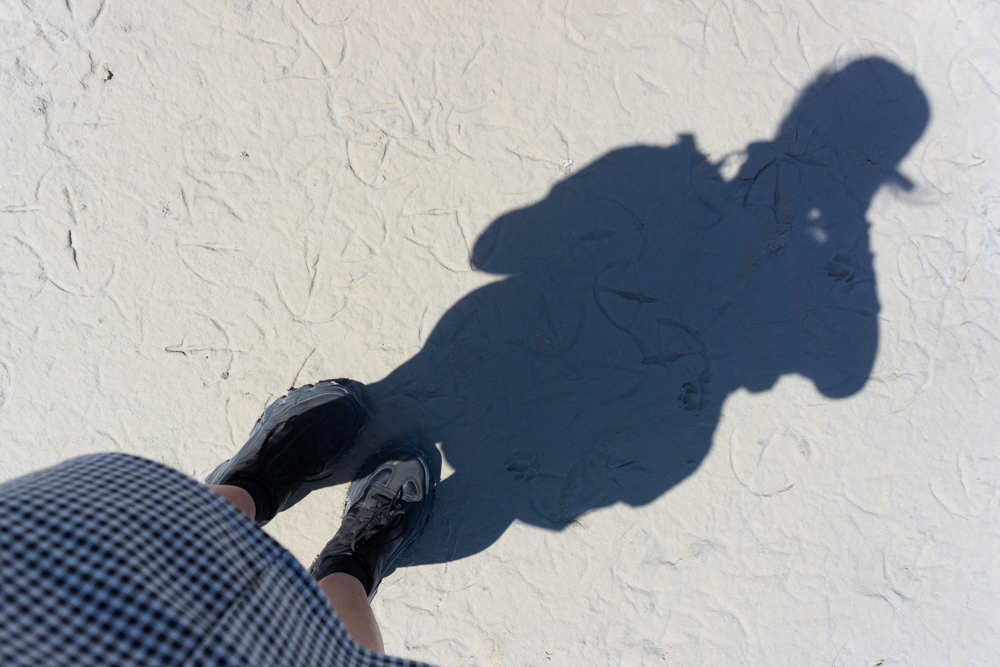
The lake is also recognized as part of the Natura 2000 network, which aims to protect Europe’s most valuable natural habitats.
Some of the best birdwatching conditions are in the Akrotiri Environmental Education Centre in Akrotiri village. Besides offering telescopes, you can learn more about the wildlife through its exhibits.
Landscape
Akrotiri Salt Lake changes its face throughout the year. In winter, it is filled with rainwater and creates a beautiful, vast, shimmering mirror reflecting the sky and birds in flight. In summer, the water evaporates and leaves behind dry, desert-like soil filled with a crust of white salt flats that sparkle under the sun. Occasionally, some dry flats grow out of the lake. The greener vegetation is found on the outer edges of the lake, especially near the entry points.
Photography opportunities are best during sunsets and sunrises, when the reflective play on the lake surface amplifies colors and gives the sky a more dramatic feeling and shape. The conditions are also ideal for abstract photography, where you can capture cracked salt patterns, mirrored water, and silhouettes of reeds and trees.
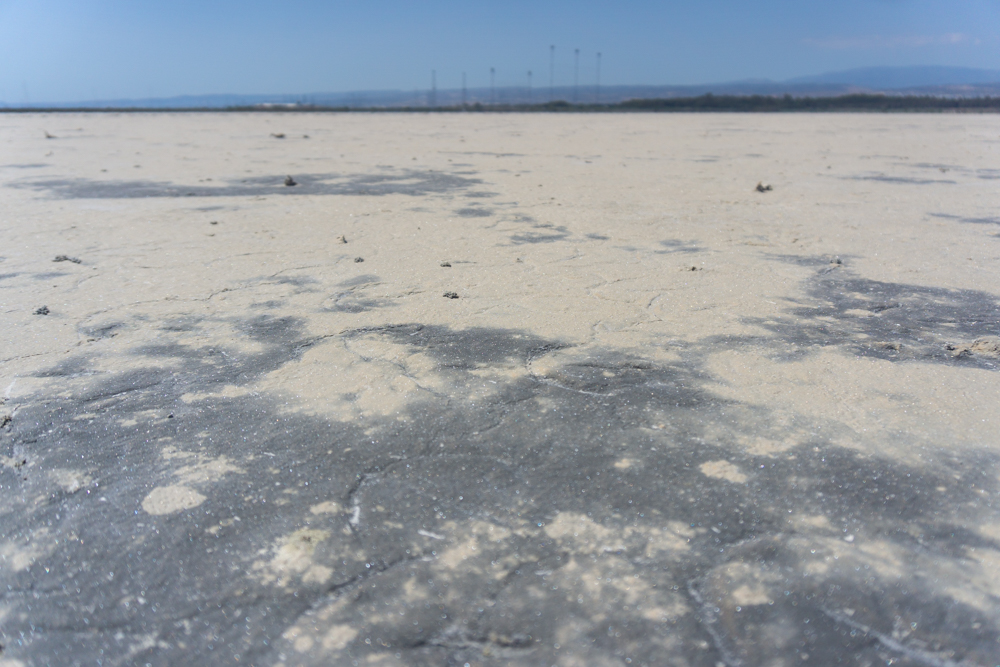
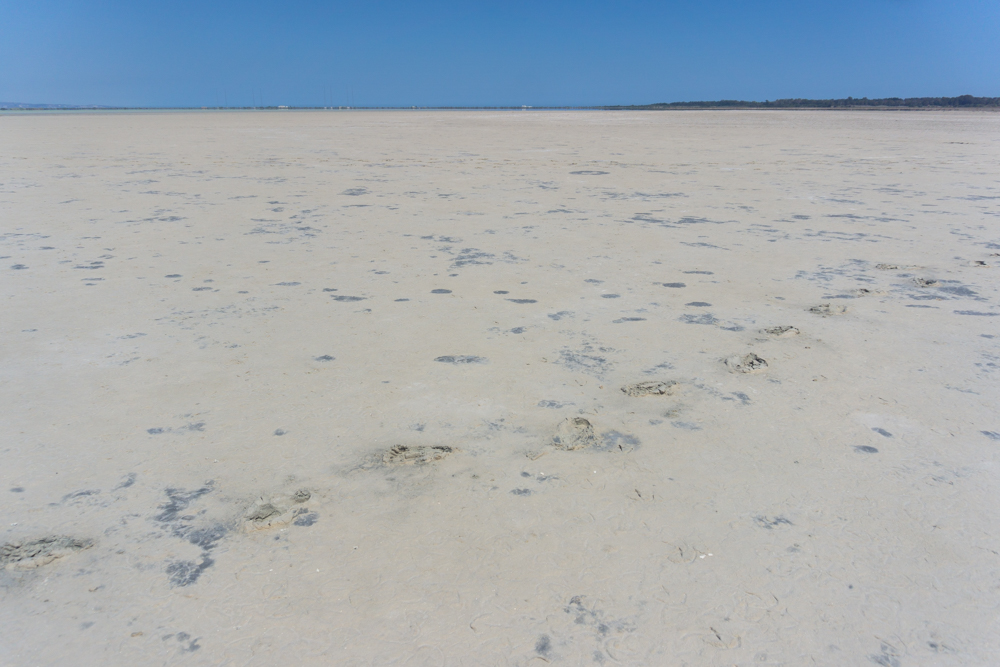
Historical Significance
The Akrotiri Peninsula has a rich history dates back to the Epipaleolithic era. It includes the Aetokremnos site, one of the earliest known human habitations on the island.
The most well-known place for human presence is the Monastery of St. Nicholas of the Cats, which lies near Cape Gata and the lake. It dates back to around the 4th century. Saint Helena, the mother of Emperor Constantine the Great, founded it. The monastery has a nickname referring to the presence of cats. Back then, Saint Helena imported cats to the area to fight local snakes.
Some sources also pinpoint salt harvesting, which is a general practice across Cyprus. It usually includes extracting salt from evaporated lakebeds during the summer.
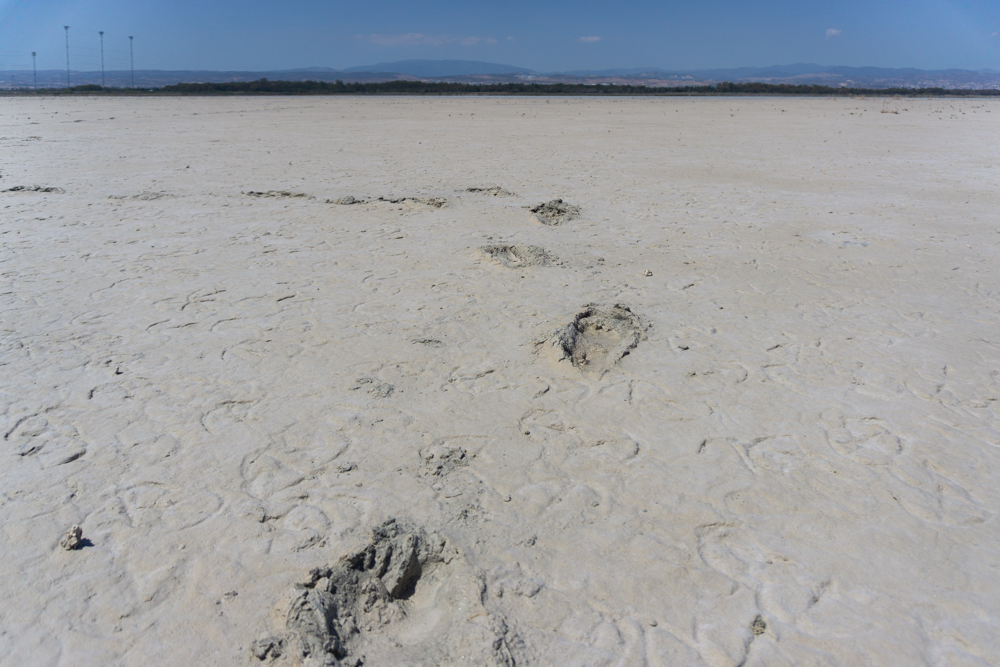
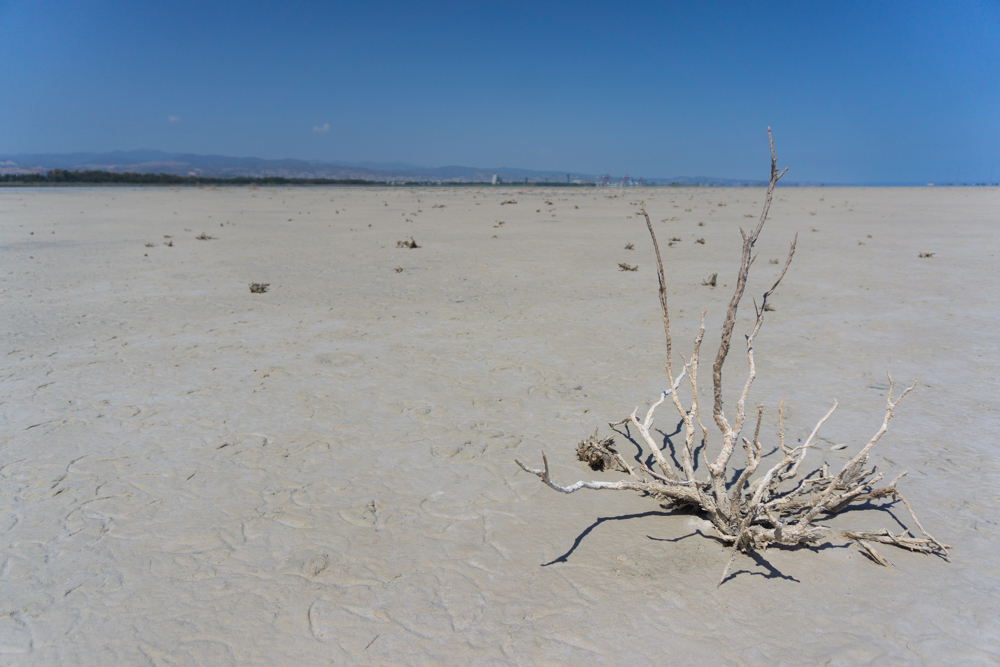
Things to Do Around
I have already mentioned some nearby spots you can check: the Monastery of St. Nicholas of the Cats and the Akrotiri Environmental Education Centre.
The center is in the Akrotiri village, where you can also check the Timiou Staurou church. It is an easily accessible single-aisled, barrel-vaulted structure with a central dome. The building is made of concrete, stone, and thick external masonry. There are verandas on the north, west, and south sides.
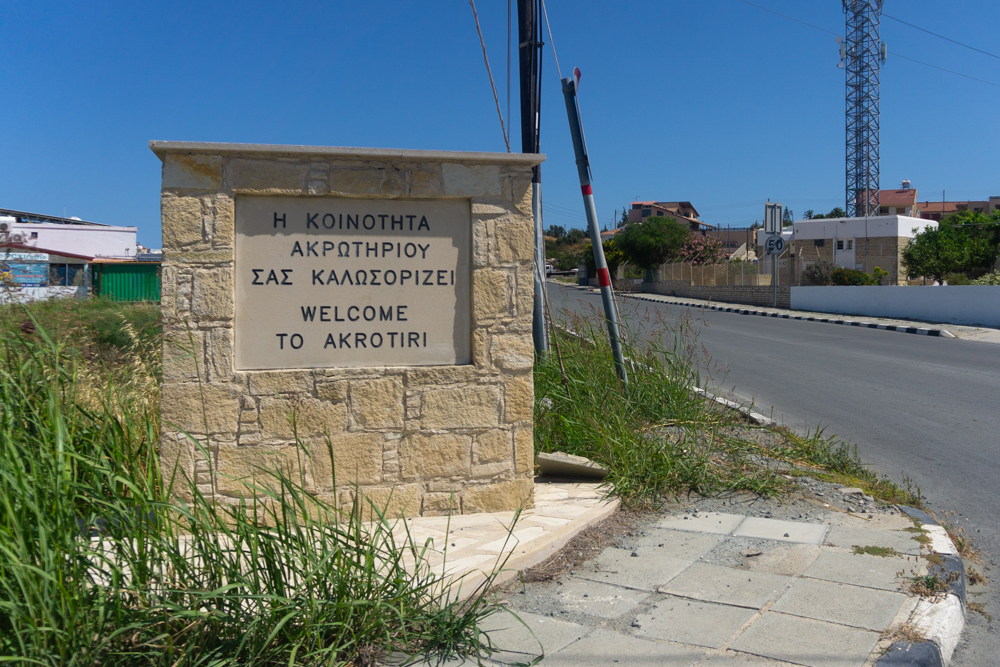
Concrete pillars support all of them. The southeast corner hosts the bell tower. If you can step inside, you can spot the floor with mosaic marble and a sanctuary. The church was built in the 20th century.
1 km away from the village is the Saint George Chapel, dating from the 16th century. It is a single-aisled basilica made of local Limassol stone with a bell tower at the southeast corner. The interior is made of Cypriot stucco. The walls are covered in frescoes from the 15th to 16th centuries.
Around 3 km away from the village are the Akrotiri Sand Dunes. The dunes are unique phenomena formed by local winds. Most of them are low with vegetation, but there are some higher exceptions suitable even for sandboarding. The place leads to a Kadjimuttala beach where you can spot turtle nests. The beach is popular among surfers and divers.
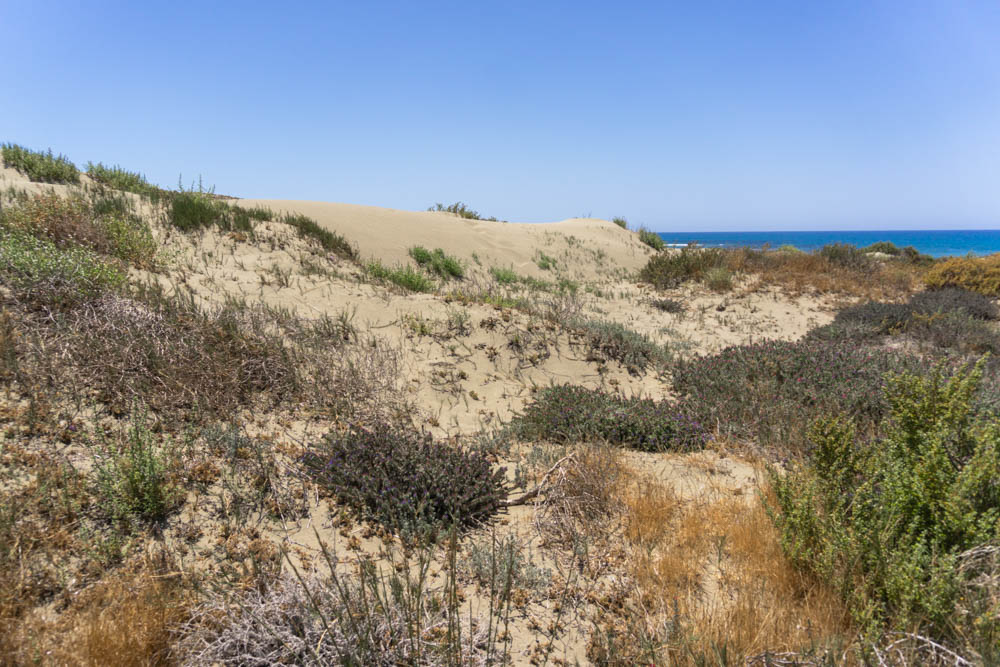
You can see the Achaios Shipwreck from it. Builders constructed it in 1932, and in January 1976, a strong storm stopped its journey from Yugoslavia to Jeddah in Saudi Arabia. The ship lies in shallow waters, approximately 7 meters deep.
A little further afield, the Akrotiri Marsh offers another paradise for birdwatchers and nature lovers. For those seeking sun and sand, Lady’s Mile Beach is just a short distance beyond, with shallow waters ideal for swimming and windsurfing. For a more detailed guide to all attractions on the peninsula, check my article.
Practical Travel Tips
Transport
To reach the Akritori Peninsula, you can use a car or public transport. Those who prefer to use public transport can take bus number 24 from Emel Bus Station and get off at the last bus stop in the Akrotiri Village or at the next-to-last stop, which is nearer the Akrotiri Salt Lake.
If you are coming with a car from Limassol, take the B6 road southwest, and in around 25 minutes, you will reach the Akrotiri Village. From Paphos, start at the A6 highway towards Limassol and then follow the B6 south to Akrotiri. The distance is approximately 70 km and a one-hour drive. From Larnaca, you need to enter the A5 highway and then continue on the B6 road south. The journey will take around 1 hour and 15 minutes.
Best Visiting Times
As I stated earlier, if you want to see some wildlife, come early in the morning in the right season—winter or during the migratory season in spring or autumn.
Akrotiri Salt Lake and the Marsh are accessible via well-marked trails suitable for walking or cycling. However, the dry salt lake is better experienced on foot since some parts can be unstable and too soft.
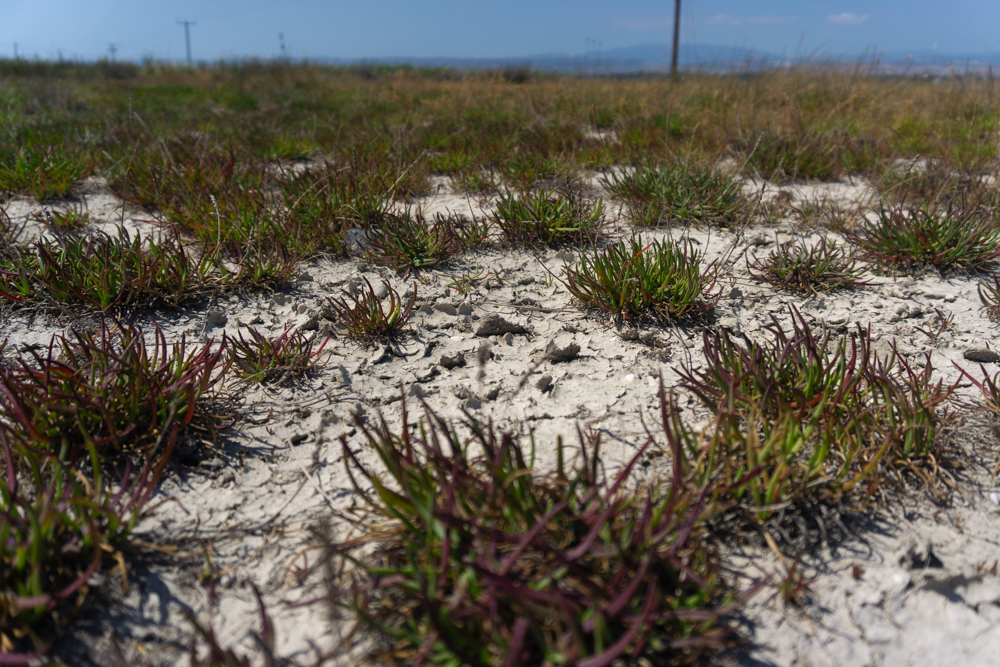
Opening Hours
Akrotiri Salt Lake, the Marsh, Sand Dunes, and Lady’s Mile Beach are open 24 hours a day without a fee.
Akrotiri Environmental Education Centre is open Monday through Friday from 7:30 AM to 2:00 PM and Sunday from 9:00 AM to 1:00 PM. It is usually closed on Saturdays and Public Holidays.
The Holy Monastery of St. Nicholas of the Cats is open daily from 8 AM to 5 PM during the week, but closed on the weekend.
Dining and Accomodation
After exploring the area, head into Akrotiri village for a relaxed evening. You’ll find cozy tavernas serving authentic Cypriot dishes, including Polis Tavern Akrotiri, George’s Fish and Chips, The Hamlet Pub, The Royal House, and Perfect Pizza. For those planning to stay much longer, accommodation options are available, such as Akrotiri Holiday Villa.
Why Add It to Your Cyprus Itinerary
Akrotiri Salt Lake is a perfect addition to your Cyprus itinerary because it combines stunning natural landscapes, rich wildlife, and interesting cultural history. Unlike the crowded beaches or busy cities, it offers a peaceful and serene stop to relax and explore. Its location makes it an ideal day excursion between major destinations like Limassol, Paphos, or Larnaca.
Sources:
wessexcoastgeology.soton.ac.uk/Cyprus-Akrotiri-Lake-Coast.htm
www.akrotiri.org.cy/en/what-to-know-ten/religious-life-ten/church-timios-stavros-ten.html
www.stnicholascenter.org/gazetteer/3706
www.instagram.com/akrotirivilla/?hl=en
visitakrotiri.cy/plan-your-visit/swimming-water-sports/
Sources: